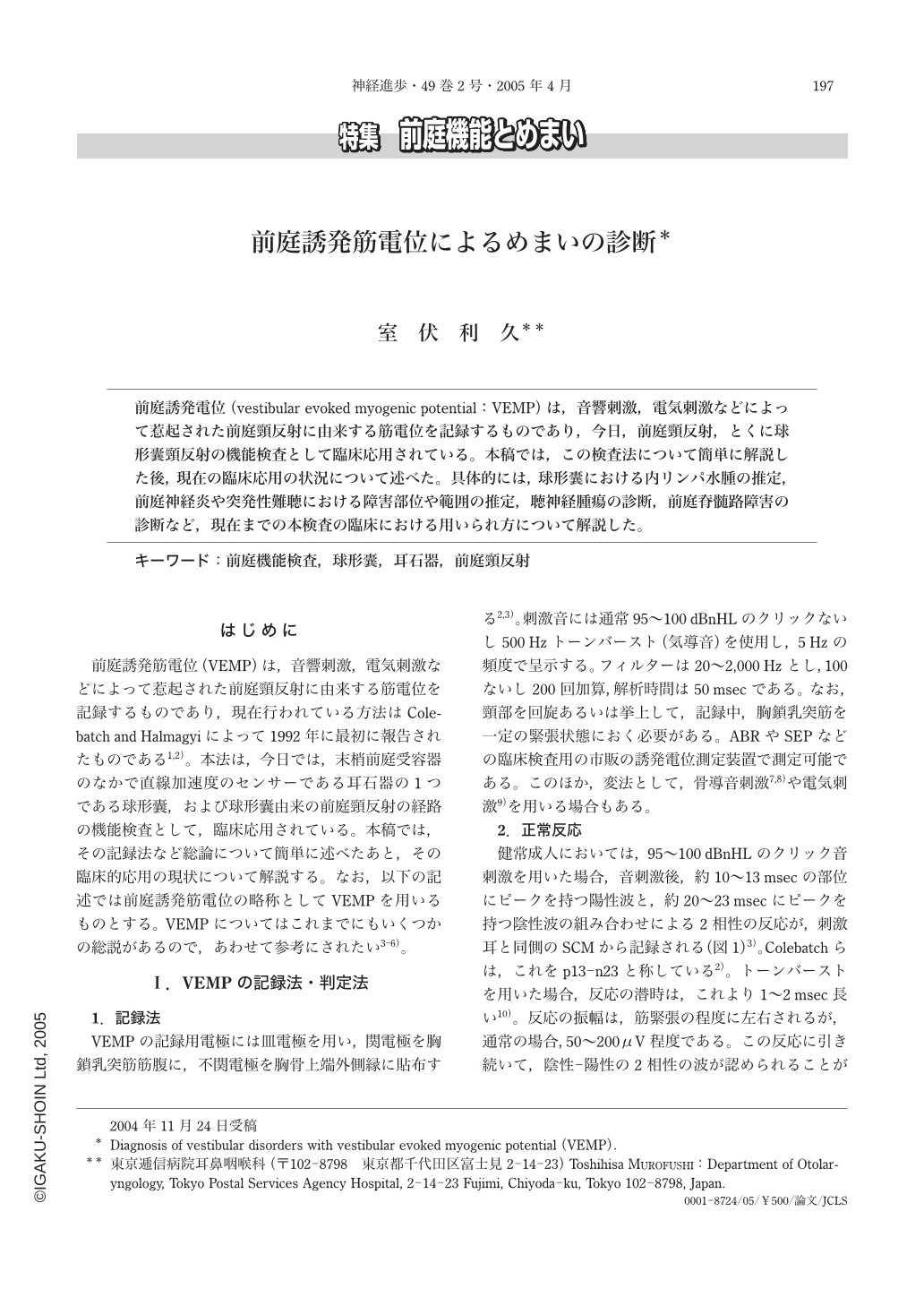Japanese
English
- 有料閲覧
- Abstract 文献概要
- 1ページ目 Look Inside
前庭誘発電位(vestibular evoked myogenic potential:VEMP)は,音響刺激,電気刺激などによって惹起された前庭頸反射に由来する筋電位を記録するものであり,今日,前庭頸反射,とくに球形囊頸反射の機能検査として臨床応用されている。本稿では,この検査法について簡単に解説した後,現在の臨床応用の状況について述べた。具体的には,球形囊における内リンパ水腫の推定,前庭神経炎や突発性難聴における障害部位や範囲の推定,聴神経腫瘍の診断,前庭脊髄路障害の診断など,現在までの本検査の臨床における用いられ方について解説した。
Vestibular evoked myogenic potential(VEMP)is a new clinical test of the vestibule-collic pathway, especially saccluo-collic pathway. VEMPs are myogenic potentials on the sternocleidomastoid muscle evoked by acoustical and galvanic stimulation. In this manuscript, the author reviewed the present state of the clinical application of VEMP. Firstly, VEMP is used for the diagnosis of the endolymphatic hydrops in the saccule. For this purpose, VEMP is measured before and after the oral administration of glycerol(1.3g/kg body weight). One can regard the subject has the endolymphatic hydrops in the saccule when the amplitude of VEMP was significantly increased after the administration of glycerol. Secondly, VEMP is used for the diagnosis of the involvement of the inferior vestibular nerve in vestibular neuritis. On the basis of results of VEMP in patients with vestibular neuritis, one third of patients with vestibular neuritis were considered to have inferior vestibular nerve involvement. The use of short duration galvanic stimulation in combination with acoustical stimulation provides information concerning the lesion site. The absence of responses to acoustical and short duration galvanic stimulation means the lesion site is in the retro-labyrinth while the preservation of responses to short duration galvanic stimulation despite the absence of responces to acoustical stimulation means the lesion site in the labyrinth. Majority of patients with vestibular neuritis showed that they have lesions in the retro-labyrinth while a part of patients were considered to have lesions in the labyrinth. The author also proposed a new clinical entity, inferior vestibular neuritis. Thirdly, VEMP is used for the diagnosis of the involvement of the otolith organs in sudden deafness. In patients with sudden deafness, it was seemed that the otolith organs were involved more frequently than the semicricular canals. Furthermore, VEMP is used for the diagnosis of acoustic tumors and disorders in the vestibulospinal tract such as multiple sclerosis. The author emphasized that VEMP is a simple and useful clinical test of the vestibular system.

Copyright © 2005, Igaku-Shoin Ltd. All rights reserved.


